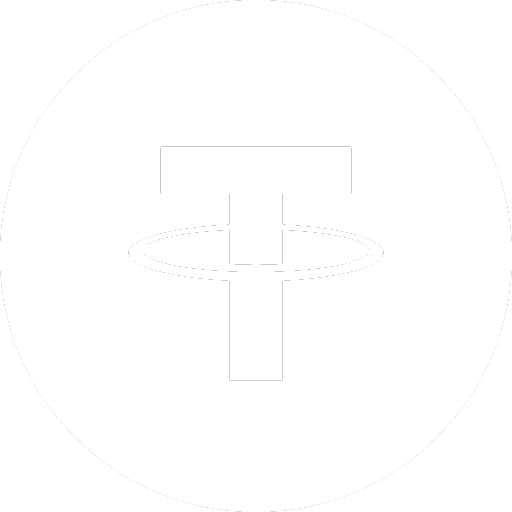






TOKENICATION_ is your reliable source for the latest news and analysis on cryptocurrencies. We provide up-to-date information on Bitcoin, Ethereum, and other digital currencies to keep you informed about the latest trends and help you make informed decisions.

Date: 2025-02-25 15:22:59
"Build for where the industry is headed, not where it currently stands." This philosophy has propelled disruptive innovations for years – Microsoft seized the microprocessor opportunity, Salesforce harnessed the cloud, and Uber flourished in the mobile revolution.
The same rule holds true for AI – Generative AI is progressing so rapidly that focusing on today's capabilities could lead to obsolescence. Historically, Web3 has had minimal influence in this AI evolution. But can it keep pace with the latest industry trends?
2024 marked a significant year for generative AI, with cutting-edge research and engineering advancements. It was also the year that the Web3-AI narrative transitioned from conjecture to real-world applications. Initially, AI centered around mega-models, lengthy training cycles, extensive compute clusters, and deep enterprise pockets – barriers that hindered Web3 integration. However, emerging trends in 2024 are paving the way for meaningful Web3 collaboration.
In 2024, the Web3-AI landscape was saturated with speculative projects like meme-driven agentic platforms, indicative of a bull market but offering minimal practical value. As this hype subsides, there's a chance to refocus on genuine use cases. The generative AI landscape of 2025 will be drastically different, with transformative shifts in research and technology. Many of these developments could stimulate Web3 adoption, but only if the industry prepares for the future.
Let's explore five key trends influencing AI and their potential impact on Web3.
Reasoning has emerged as the next frontier for large language models (LLMs). Recent models like GPT-01, DeepSeek R1, and Gemini Flash prioritize reasoning abilities. Functionally, reasoning enables AI to dissect complex inference tasks into structured, multi-step processes, often using Chain of Thought (CoT) techniques. As instruction-following became standard for LLMs, reasoning will soon be a prerequisite for all major models.
Reasoning involves complex workflows that necessitate traceability and transparency – areas where Web3 excels. Imagine an AI-generated article with verifiable reasoning steps on-chain, providing an immutable record of its logical sequence. In a world dominated by AI-generated content, this level of provenance could become essential. Web3 can offer a decentralized, trustless layer to verify AI reasoning pathways, addressing a critical gap in today's AI ecosystem.
Advanced reasoning relies heavily on synthetic data. Models like DeepSeek R1 employ intermediate systems (such as R1-Zero) to produce high-quality reasoning datasets, which are then used for fine-tuning. This approach reduces reliance on real-world datasets, expediting model development and enhancing robustness.
Synthetic data generation is ideal for decentralized networks due to its highly parallelizable nature. A Web3 framework could motivate nodes to contribute compute power toward synthetic data generation, earning rewards based on dataset usage. This could foster a decentralized AI data economy powered by synthetic datasets for open-source and proprietary AI models.
Earlier AI models relied on massive pretraining workloads requiring thousands of GPUs. However, models like GPT-01 have shifted focus to mid-training and post-training, enabling specialized capabilities such as advanced reasoning. This shift significantly alters compute requirements, reducing dependence on centralized clusters.
While pretraining demands centralized GPU farms, post-training can be distributed across decentralized networks. Web3 could facilitate decentralized AI model refinement, allowing contributors to stake compute resources in return for governance or financial incentives. This democratization of AI development makes decentralized training infrastructures more feasible.
Distillation, in which large models are used to train smaller, specialized versions, has seen increased adoption. Leading AI families such as Llama, Gemini, Gemma, and DeepSeek now include distilled variants optimized for efficiency, enabling them to run on commodity hardware.
Distilled models are compact enough to run on consumer-grade GPUs or even CPUs, making them suitable for decentralized inference networks. Web3-based AI inference marketplaces could arise, with nodes providing compute power to execute lightweight, distilled models. This decentralizes AI inference, reducing reliance on cloud providers and unlocking new tokenized incentive structures for participants.
Generative AI faces a significant challenge in evaluation. Many top-tier models have effectively memorized existing industry benchmarks, rendering them unreliable for assessing real-world performance. When a model scores exceptionally high on a given benchmark, it's often because that benchmark has been included in the training corpus of the model. Currently, no robust mechanisms exist for verifying model evaluation results, leading companies to rely on self-reported numbers in technical papers.
Blockchain-based cryptographic proofs could introduce unprecedented transparency into AI evaluations. Decentralized networks could verify model performance across standardized benchmarks, reducing reliance on unverifiable corporate claims. Additionally, Web3 incentives could encourage the development of new, community-driven evaluation standards, pushing AI accountability to new heights.
Generative AI is experiencing a paradigm shift. The path to artificial general intelligence (AGI) is no longer dominated by monolithic models with lengthy training cycles. New advancements – such as reasoning-driven architectures, synthetic dataset innovations, post-training optimizations, and model distillation – are decentralizing AI workflows.
Web3 was largely absent from the first wave of generative AI, but these emerging trends present fresh opportunities where decentralized architectures can provide real utility. The crucial question now is: can Web3 evolve quickly enough to seize this moment and become a significant force in the AI revolution?
Read More: "Metaplanet Raises $13.6m through Ordinary Bond Sales for Bitcoin Purchases"